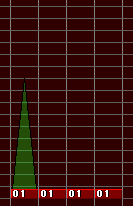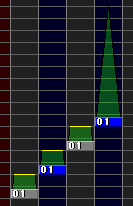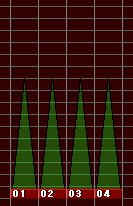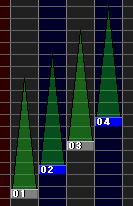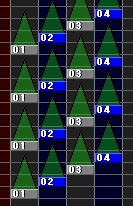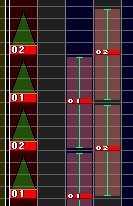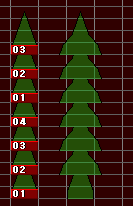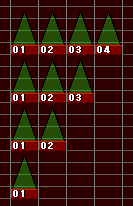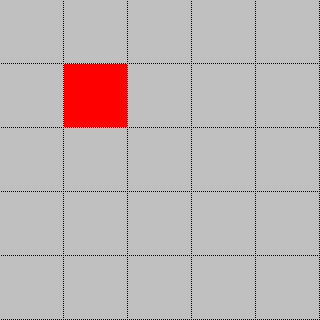BMS apps:
The abbreviation which this document uses for convenience is as follows. (It may differ from a formal abbreviation. )
| The name and version | Abbr | Description |
|---|---|---|
| Body (obsolete): | ||
| BM98 & BM98 kikuchan version 330 revision 42 | BM98 | https://hitkey.nekokan.dyndns.info/bm98.htm |
| BM98 Kikuchan Version 3.32β Drink Edition | BM98de | http://www.uranus.dti.ne.jp/~kikuchan/bm98/ |
| music game quest ver2.18 | MGQ | https://web.archive.org/web/*/http://www.geocities.co.jp/Playtown/4702/* |
| Delight Delight Reduplication Ver.0.50 beta5 | DDR | https://delight.airytail.co/download.html |
| rhythm-it 1.72a | RDM | https://nvyu.net/rdm/download3.php |
| Mixwaver 1.6 Final & MixWaver][ 1.2 | MW | http://mixwaver.s18.xrea.com/html/dl_mw.html |
| BmDx Millennium Edition M6 (old document) | BmDx | https://web.archive.org/web/*/http://www.interq.or.jp/ski/sakura/otoge/otoge_bmdx.html |
| bemaniaDX Vision.3 APPEND Vision.4 Skin version 0.95 | bemaniaDX | https://web.archive.org/web/20070518162219/http://bemaniadx.s3.xrea.com/download.html |
| unofficial nazobmplay rev.798 | nazo | https://manbow.nothing.sh/nazobmplay/download.html |
| unofficial nazobmplay rev.798 + Glasopal | nazoZZ | https://hitkey.nekokan.dyndns.info/glasopal.html |
| BM2DXEmu a20 | DXEmu | http://www.charatsoft.com/software/bm2dxemu/index.html |
| MacBeat 0.9.8.3 | Mac | http://harinezumi.s14.xrea.com/download/MacBeat0983.sit.bin |
| Aqua'n Beats 1.0.3 | Aqua | http://aquan-beats.matrix.jp/ |
| nanasigroove ver.1.552 | nanasi | http://d11x.sakura.ne.jp/asdf/?p=13 |
| forgetalia++ () | fgt++ | http://cerebralmuddystream.hp.infoseek.co.jp/forgetalia++/index.html (closed) |
| Body (current): | ||
| LunaticRave2 | LR2 | https://web.archive.org/web/20110210225009/http://www.lr2.sakura.ne.jp/index2.html (for now, the de facto standard in Japan) |
| ruv-it! 2.0 b5p7 test #7 () | ruvit | https://nvyu.net/rdm/ (for now, the de facto standard in South Korea) |
| nanasigroove2 beta (Toy Musical 3 Ver.2.2) | nanasi2 | http://d11x.sakura.ne.jp/asdf/ |
| forgetalia# () | fgt# | https://cerebralmuddystream.nekokan.dyndns.info/soft/forgetalia_sp.zip |
| Feeling Pomu Second Ver 0.8001 | pomu2 | https://pmcc.nekokan.dyndns.info/pmcc2/download.html |
| charatbeatHDX VIOLET (v1.05) | HDX | http://www.charatsoft.com/software/charatbeatHDX/index.html |
| Angolmois 2.0 e5cea53a2cbd | Angolmois | https://mearie.org/projects/angolmois/ |
| Angolmois Rust Edition () | Angolmois | https://github.com/lifthrasiir/angolmois-rust |
| Sonorous 0.1.0-pre () | Sonorous | https://cosmic.mearie.org/f/sonorous/ |
| Editor: | ||
| BMS Creator 2.0b1 | BMSC | http://tixlab.com/software/bmsc.shtml |
| beditor 1.3.1 | beditor | https://web.archive.org/web/*/http://macbeat.at.infoseek.co.jp/data/* |
| GDA Creator Professional Edition Ver.0.24 | GDAC2 | https://www.asahi-net.or.jp/~nm4j-tyn/gdac2/ |
| GDAC2 lane-script for nanasigroove-extended-command | 774gsc | http://asdf.bms.ms/soft/nanasi/774gsc.zip (download is impossible now) |
| BMx Sequence Editor 1.3.8 | BMSE | http://ucn.tokonats.net/software/bmse/ |
| BMx Sequence Editor dttvb-1.3.8 ( ver.) | BMSE | https://github.com/dtinth/UCN-BMSE (visualization of LN) |
| iBMS BMS Creator 3.0.5 Delta | iBMSC | https://web.archive.org/web/20140819164923/http://www.cs.mcgill.ca/~ryang6/iBMSC/ |
| DTXCreator 026 () | DTXC | https://en.osdn.jp/projects/dtxmania/releases/ |
| Viewer (obsolete): | ||
| BMS Viewer 2.0 | BMSV | https://web.archive.org/web/*/http://www.h3.dion.ne.jp/~cpp/download/bmview/index.html |
| BME(BMS) Viewer 0.04 | BMEV | http://www.din.or.jp/~k-uraki/game/tools.html |
| nBMplay v0.26a | nBMplay | https://www.nothing.sh/download/ |
| in_bm 1.17 (WAview) | WAview | https://web.archive.org/web/*/http://nickle.ath.cx/~softlab/in_bm/ (plug-in of Winamp (https://www.winamp.com/) |
| o2play | o2play | http://rlnoparo.ys168.com/ |
| Viewer (current): | ||
| uBMplay 1.5.2 | uBMplay | http://ucn.tokonats.net/software/ubmplay/ |
| PMSee-V v2.2.3 | PMSee-V | https://sakukoba.ninja-x.jp/ponila/ |
| BMIIDXView2010 v2.14 | IIDXv | http://www.charatsoft.com/software/bmview/index.html |
| Others (obsolete): | ||
| otama Ver.0.991 | otama | https://www.asahi-net.or.jp/~VG5M-OBT/otama.html (bullet curtain) |
| NINJA AGENT GALLI ver1.03 | GALLI | https://web.archive.org/web/20160311123053/http://ninjaactionteam.sakura.ne.jp/sakuhin_bmsplayer.html (action game) |
| BMS Printer Ver.0.01 Pre-Release | bmsPRN | https://delight.airytail.co/download.html |
| bms2wav 0.07b / 0.07c | bms2wav | http://homepage2.nifty.com/ma~/ (download is impossible now) |
| bme2wav BETA 13 | bme2wav | http://childs.squares.net/program/bme2wav/index.html |
| BmsToAvi 0.03c | bms2avi | http://www32.tok2.com/home/digitalapeman/Tools/BmsToAvi/BmsToAvi.html |
| BGAEncoder 0.2a | BGAenc | http://titans-server.ddo.jp/~murasin/ (download is impossible now) |
| in_bm 2.01 | in_bm2 | https://web.archive.org/web/*/http://nickle.ath.cx/~softlab/in_bm/ (plug-in of Winamp) |
| BMS/BME/EMS plugin for KbMediaPlayer version 1.0r13 | bmse.kpi | KbMedia Player Version 2.63a contains this |
| Others (current): | ||
| bmx2wav 1.3.3 | bmx2wav | http://childs.squares.net/program/bmx2wav/index.html |
| PMChr-V v4.0.2 | PMChr-V | https://sakukoba.ninja-x.jp/ponila/ |
| woslicerII (wav-file slicer) | woslicerII | https://cerebralmuddystream.nekokan.dyndns.info/ |
| woslicerII (bug-fix version? ) | woslicerII | https://twitter.com/wosderge/status/246852579550699522 |
| woslicerIII |
woslicerIII | https://cerebralmuddystream.nekokan.dyndns.info/ |
BMx Outliner (for now, #RANDOM / #SWITCH viewer) |
outliner | https://hitkey.nekokan.dyndns.info/bmxoutliner.htm (web apps) |
| Starry Music Beat ver1.03 | SMB | https://itunes.apple.com/jp/app/starry-music-beat/id481749987?mt=8 (for iOS) |
| BGAEncAdvance Ver0.034 | BGAEncAdv | https://yaruki0.net/programs/bgaencadv.html |
| bms diff tool | diff | https://stairway.sakura.ne.jp/smalltools/minibmsplay/diff.htm (web apps) |
| lr2_pmsview_helper | LR2PMS | https://twitter.com/misty_ls04/status/473058415636279296 |
| to be tested: | ||
| o2mania 1.2.0 | o2mania | http://www.o2mania.com/ |
| MyO2 | MyO2 | (Since it seems that I received warning, I do not indicate URI.) |
| D3beat ver1.1 (jubeat style / Windows7 or later) | D3beat | http://www.nicovideo.jp/mylist/29296483 |
| Invisible Object to Landmine Object Converter | 3-4toD-E | https://nekokan.dyndns.info/~otlovers/guidance/guidance_4b.html |
| Sp2Dp ver_ | SP2DP | http://www.geocities.jp/o6o_o9o_o6o/soft/ (download is impossible now) |
| BMSE ClipBoard Object Data Format to NoteDrop Converter | BM-ND | http://bmse-notedrop.jgate.de/ (web apps) |
| Be-Music Helper (beta 4′) |
bmhelper | https://excln.github.io/bmhelper.html |
| Mid2BMS | Mid2BMS | http://mid2bms.web.fc2.com/ |
| [tentative name] [suspended] TechnicalGroove | techGrv | https://web.archive.org/web/*/https://dl.dropboxusercontent.com/u/19134729/otogeokiba.html |




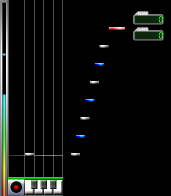

 STOP time: about (However, apps other than uBMplay will do forced termination.)
STOP time: about (However, apps other than uBMplay will do forced termination.)